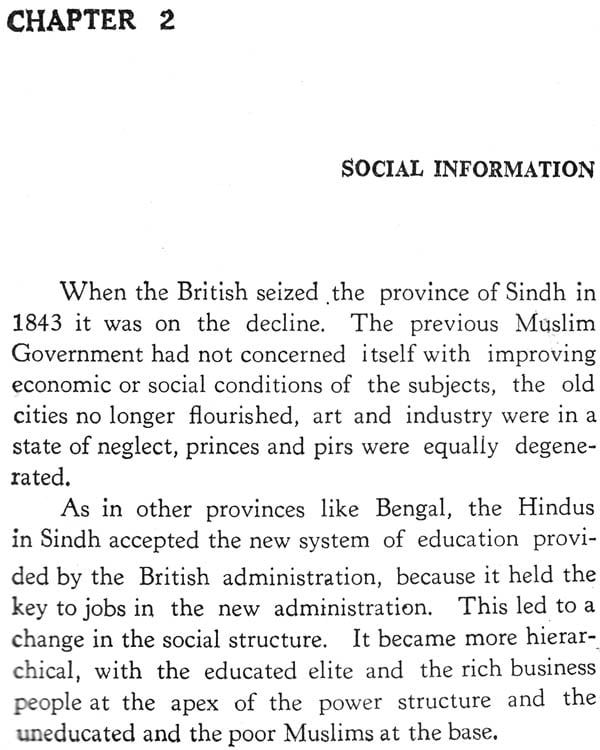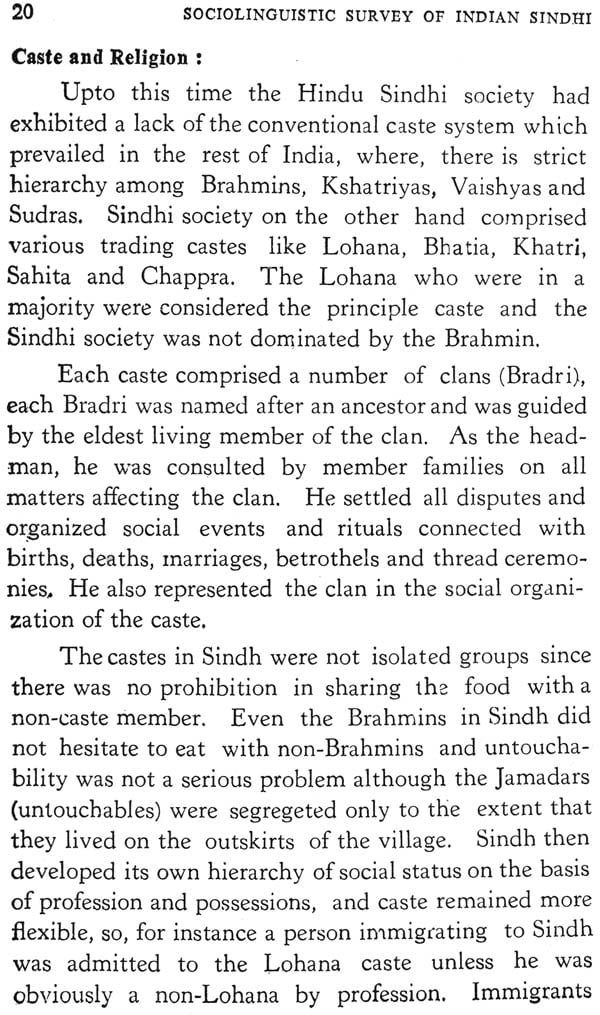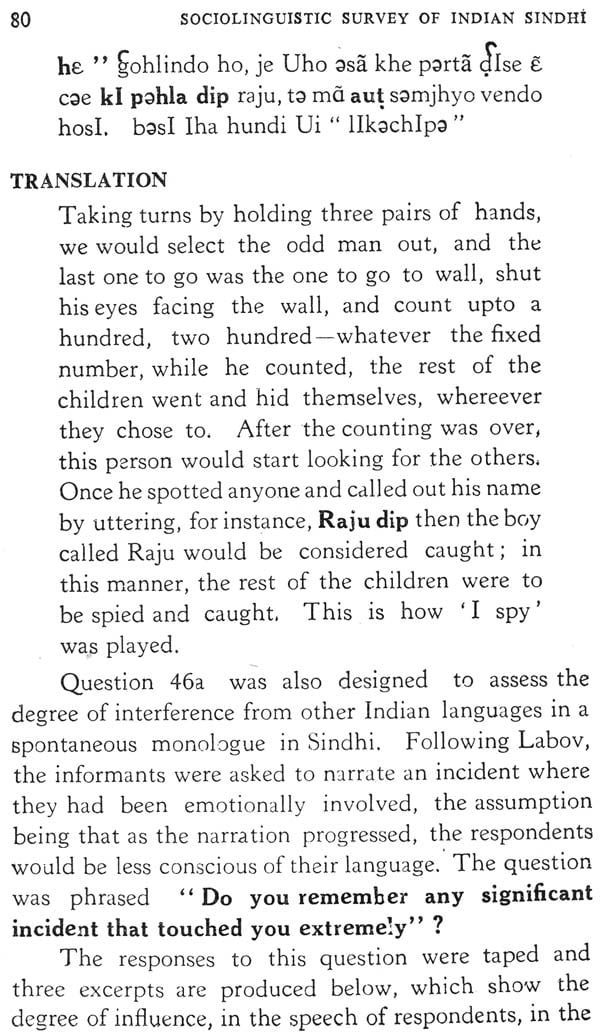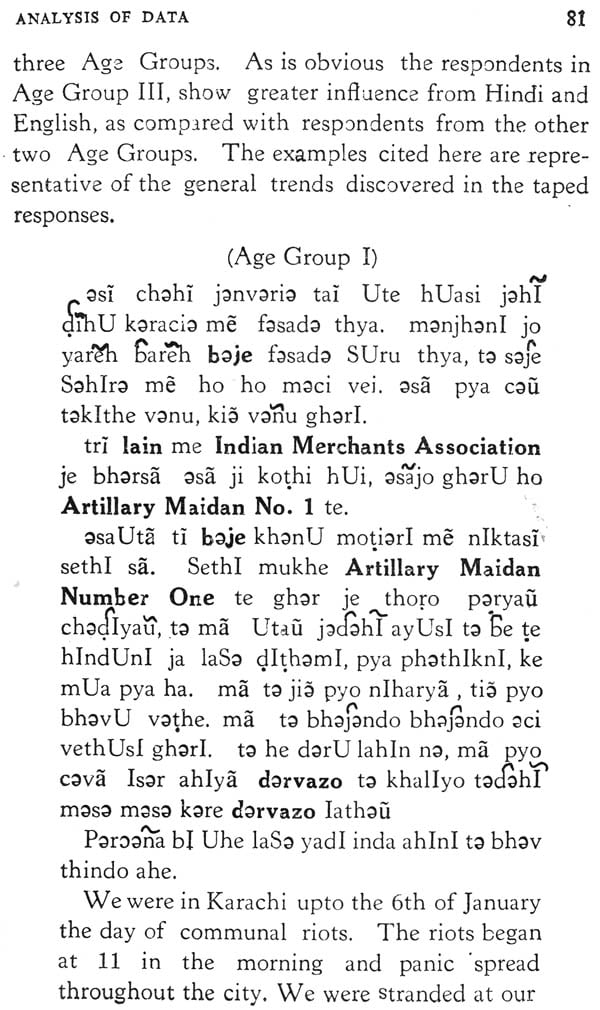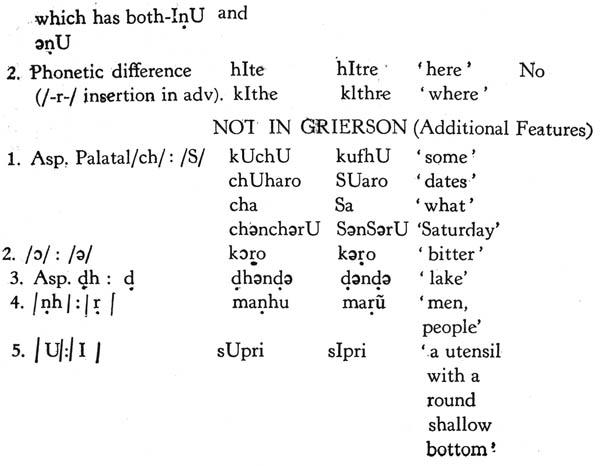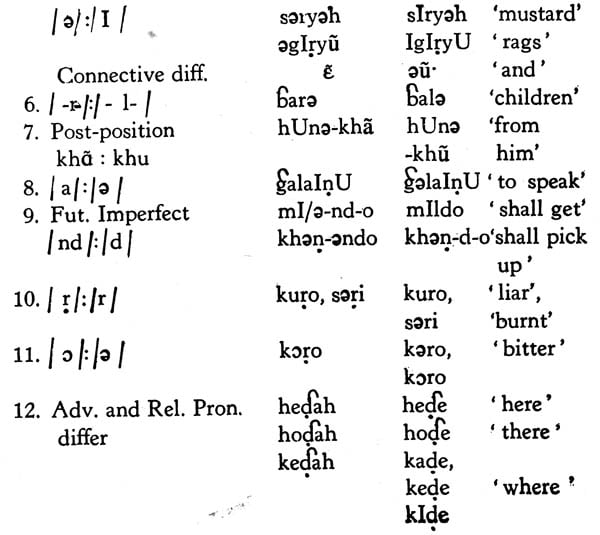
Sociolinguistic Survey of Indian Sindhi (An Old and Rare Book)
Book Specification
| Item Code: | NAW392 |
| Author: | C. J. Daswani and S. Parchani |
| Publisher: | Central Institute Of Indian Languages, Mysore |
| Language: | English |
| Edition: | 1978 |
| Pages: | 166 |
| Cover: | PAPERBACK |
| Other Details | 8.50 X 5.50 inch |
| Weight | 180 gm |
Book Description
At least 60% of the 16.8 million people speaking Sindhi live in Sindh in West Pakistan. Rest of the Sindhi speaking population are concentrated mostly in northern Gujarat and Maharashtra, although they are to be found thinly spread in most parts of India. An Indo-Aryan language, it is closely related to Lahanda and merges into Marwari. The standard literary form was based on the Vicholi dialect, but is claimed by some to be based on the Lari dialect of South Sindh. Sindhi is written in the Banya character which is a variety of Lahanda script, in Gurumukhi character, in Arabic character and in Devanagari character. It is interesting to note that while the earlier generation of Sindhi speakers were tutored through the Arabic Script, the modern generations are tutored in the Devanagari script. Script has always been a source of controversy, which has worked to the detriment of the development of Sindhi language in India.
The present study is indicative rather than conclusive. It speaks of the declining competence as well as growing negative attitude towards Sindhi over generations. This explains the demand for Sindhi schools and at the same time declining students in the Sindhi medium schools in the country in general.
The study apart from being interesting from the point of view of language maintenance is also interesting from the point of Socio- linguistics Methodology: The authors are to be congratulated for the fine study.
The Central Institute of Indian Languages was originally entrusted the responsibility of developing trans-State languages like Sindhi and Urdu. Subsequently the Government has established two autonomous Boards for furthering this end. If the Sociolinguistic Survey of Indian Sindhi helps in a greater understanding of the natural process of language development in the country, our efforts would be rewarded.
The present Report is based on a survey conducted by the authors to determine the present status of the Sindhi language in India. The survey entitled "Socio-linguistic Survey of Indian Sindhi" was conducted under a grant from the Central Institute of Indian Languages during the period September 1975 to May 1976.
The authors are grateful to the CIIL and Dr. D. P. Pattanayak, Director of CIIL for having provided them the opportunity to carry out this work. Authors are also grateful to the informants and agencies that made this survey possible.
The Report may be seen as a preliminary report and it is hoped that further in-depth studies on the subject will reveal other realities concerning the Sindhi language in India. The authors are at present engaged on in-depth survey of Indian Sindhi spoken in the Union Territory of Delhi.
Sindhi, a language of the North-Western Group of the New-Indo-Aryan languages was the native language of the province of Sindh and parts of Kutch in the undivided British India. With the partition of the Indian Sub-Continent in 1947 the entire Sindhi speaking region (with the exclusion of Kutch) became a part of the new State of Pakistan after independence. In the wake of the partition, the Hindu Sindhi speaking population migrated to India. Apart from a small number of land owners, the Sindhi Hindus in pre-partition Sindh, belonged predominantly to the business and professional classes (See Ch. II). Consequently, the Sindhi Hindu population in Sindh was concentrated in and around the large metropolitan cities and small townships.
Being basically an urban population the Sindhi Hindus, after migrating to India, tended to cluster around urban centres ‘n India. An estimated population of about eight lakhs of Sindhi Hindus who migrated from Sindh in the second half of 1947 and early 1948 settled largely in the neighbouring Indian states of Rajasthan, Central Provinces (now Madhya Pradesh) and Bombay (subsequently divided into Gujarat and Maharashtra). A small, though significant number of these migrants settled in the Indian capital, New Delhi. Most of these migrating Sindhi Hindus settled in refugee camps established by the Government of India in places like Jodhpur, Kota, Ajmer, Jaipur, Bhilwara etc., in Rajasthan; Indore, Ujjain, Ratlam, Bairagarh (Bhopal), Jabalpur, Raigarh, Raipur, Bilaspur, Amaravati, Bhandara, Akola, etc., in the Central Provinces; and Ulhasnagar, Ahmednagar, Nasik, Pune, Nagpur, Ahmedabad, Baroda, Surat and Bombay. "They moved in the form of pre-partition clusters of families, or even parts of neighbourhood groups (of- Thakur 1959, p. 159). Although, the initial migration and settlement patterns tended to attract fairly homogeneous linguistic and socio-economic groups to the various refugee Camps ; "the Refugees in search of vocation moved from place to place, the bulk of the population by 1991 (Reports of the Census 1951) settled down in Bombay, Saurashtra, Kutch, Rajasthan, Ajmer, Delhi, Madhya Bharat and Madhya Pradesh".
**Contents and Sample Pages**
